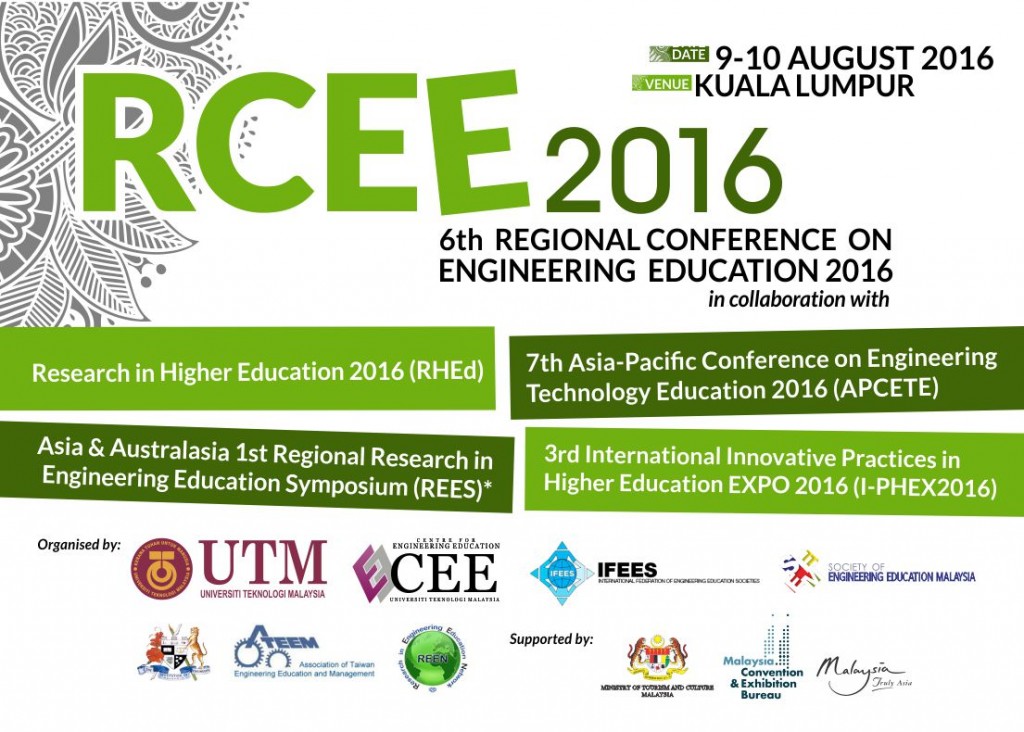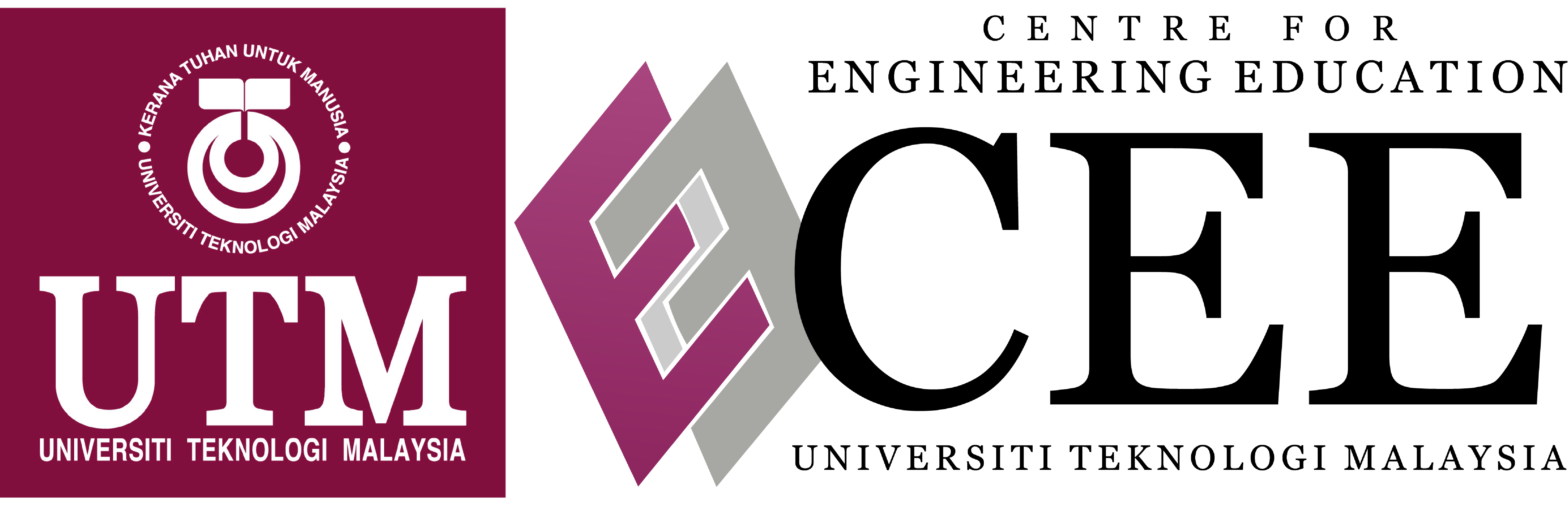
Cultivate Living Skills through Young Innovate Program
Chew Yen Seng
Young Innovate Program is a national competition for secondary school students based on the embedded system platform. The objectives are to inspire passion in STEM, develop living skills and inspire life-long learning. The secondary school students are mentored by Undergraduates to solve real-life problem.
This program has seen how the students developed their living skills especially in the area of tenacity, social and thinking skill. Students spent uncountable hours to get their prototype to work. They research and self-learn through Mass Online Open Course (MOOC). The students have to apply computational thinking and problem solving skill in order to solve the real-life problem within their community. They also have to collaborate and communicate with their peers as this program emphasises on teamwork.
Through the Young Innovate program, students learn that education and learning do not stop at school but is a continuous process even after school. They have shown more appreciation towards the importance of learning and the real life application of it. They’ve come to realization that learning is more than just to perform well academically.
Parents of the students have also seen a positive change in their children’s living skills. They noticed their child has a changed mind set towards technology especially among the girls.
As conclusion, Young Innovate program will improve living skills of the students which will help them in their future learning.
Education for Hire: Multi-Faceted Industry and Academia Collaborative Education Program in Building Sustainable Dynamic Workforce
NorAzmi Alias
Starting my career as R&D manager in a chemical company in late 1990’s get me startled to the fact that how can a graduate in Polymer Chemistry with CGPA more than 3.6 could not even articulate what differentiates a monomer from a polymer. Thereupon my interest and later became part of my career is to understand how do we close the gap between what do kids learn in classroom to what they will be doing or expected to do when the step into that 1st job in the industry. Learning is all about acquiring knowledge on specific skills and able to demonstrate the mastery of the taught skills and enhance what one learns through creativity. Company hires individual for his or her ability to execute what is expected of him or her, and the potential of the individual to grow in the job and perhaps to outgrow the job being applied to.
In this paper we will elaborate our journey on ensuring effective learning at multi levels of engagement with the talents involving collaborative effort by industry and academia surface interesting facts, gaps and opportunities for us to co-educate anyone irregardless of their age. We will share living examples of industry-driven project-based blended learning in the industry and in the classroom and building network of community of educators, mentors, coaches, trainers, educators with the single purpose of developing marketable graduates.
Strengthening Sustainability of STEM Education through Smart Partnerships
Zaleha Ismail
Smart Partnerships have been recognized as collaborations linking the assets and initiatives of institutions with community assets and interests for powerful, long-term impact. For many years PPSMJ together with Faculty of Education, Universiti Teknologi Malaysia has moved forward to establish partnerships with schools, institutions and industries towards improving mathematics and science education. PPSMJ has successfully involved university lecturers and school teachers to work together for the benefit of the community. Recently, across the country, there is a persistent call for improving the quality of education through STEM education, for reasons of economic stability, international competitiveness and scientific innovation. The need for promoting the new pedagogical strategy create an urgency for us to play important roles through smart partnerships. In this presentation, the concept of integrated STEM education will be demonstrated. The various efforts of partnerships with school, organizations and institutions through research, knowledge sharing sessions, service learning and workshops will be shared. Finally, reflections on sustainability and effectiveness of STEM education through smart partnerships will be addressed.
STEM Learning Activities at Centre for Engineering Education
Fatin Aliah Phang
Established in 2010, Centre for Engineering Education (CEE) Universiti Teknologi Malaysia (UTM) is not only a research centre in STEM Education but also a centre of excellence in promoting STEM Education in the country. Research on STEM Education is translated into actions and programs that involved different level of participants such as school students, university students, science communicators and lecturers. In this presentation, STEM learning activities organized by CEE will be presented together with some small scale research to assess the effectiveness of the activities. The STEM learning activities for school students and teachers include Problem-Based Learning for Low Carbon Education at secondary schools, Johor Sustainable & Low Carbon Schools Exhibition, TRIZ workshop for secondary school students; for university students include Low Carbon project for first year engineering students, International Engineering Service Learning and TRIZ workshop; for science communicators include inquiry and higher order thinking skills for Petrosains science communicators and assessing science communicator competency; and for lecturers include training on TRIZ, active learning, cooperative learning and problem-based learning.
Cross-Border Learning for Developing International Perspectives on STEM Education
Suhaidah Tahir
STEM Education brings varying goals and objectives such as to improve the overall students’ mathematics, science and technological literacies, increase the interest of students to pursue careers in STEM related disciplines, and develop highly literate 21st century workforce and eventually would create economic benefit to the country. As such educational institutions need to provide young people opportunities to engage in inquiry; logical reasoning and collaboration so that they can adapt and respond to their-fast changing world, participate actively in shaping a better future for themselves, their families and communities where they live. Under the APEC project on energy efficiency, the 10th APEC-Tsukuba International Conference: Innovation of Mathematics Education through Lesson Study Challenges to Energy Efficiency on STEM and Cross-border Education was held on 12-15 February, 2016. Tsukuba. Two groups of students were involved in the lesson study demo class; Grade 6 students from SK Minden and Grade 7 students from Junior High School attach to University of Tsukuba. This paper shares some experiences garnered in the process from preparation stage, conducting the lesson study demo class and the after lesson reflection activity.
STEM Education Experiences from Singapore: Harnessing the Formal and Informal Education Sectors for Synergy
R. Subramaniam
Science, Technology, Engineering and Mathematics (STEM) are increasingly being recognized by countries as great enablers for economic development. Significant initiatives are underway in many countries to foster STEM education at the school level. Singapore has made significant strides in imbuing its students with competencies in science and mathematics. The performances of her students in international competitions such as TIMSS and PISA is an indication of how far its school science education has been effective. In more recent times, efforts at the informal sector level, driven mainly by the science center and also in collaboration with schools, have also been initiated. These initiatives are also playing an important role in promoting STEM in its multi-faceted representations among students. This presentation will elaborate more on the Singapore experience with STEM education, including best practices.
Strengthening STEM Education for Industry 4.0
Ahmad Raslan
Meeting Global & National Challenges
The world is currently at the beginning of a Fourth Industrial Revolutions specifically in new emerging areas such as genetics, artificial intelligence, robotics, nanotechnology, 3D printing and biotechnology. Thus ‘Science’ becomes more relevant and substantial at the core development of an industry, business, government or country. Various efforts are being crafted and implemented by many stakeholders to ensure smooth transition and adaptation by corporations, governments and individuals.
Through MIGHT’s experience in high tech sectors, we have produced several industry planning and provide policy recommendations as follows;
1. Future Rail 2030
2. Annual Report Ship Building & Ship Repair (Maritime)
3. Malaysian Aerospace Blueprint
4. Malaysian Solar Industry Report
5. Malaysian BIOMASS Industry Action Plan
6. National Biotechnology Policy and
7. 11th Malaysia Plan
A national study, S&T Human Capital: A Strategic Planning Towards 2020 (2012) confirms that Malaysia needs at least 1.0 million S&T human capital by 2020 based on a 6% annual economic growth and the emergence of EPPs (Entry Point Projects) under the NKEAs as well as the emergence of new technology-driven sectors such as nanotechnology and biotechnology.
Industry involvement in STEM Education
In support of strengthening STEM Initiative, a number of strategies, initiatives and programs were undertaken by various parties i.e. professional bodies, NGOs, and industry to strengthen interest in STEM subjects among school children. Among the initiatives are carnival of science, science camp, and the competition such as
1. KLESF – Kuala Lumpur Engineering Science Fair & KLESF Challenge
2. Penang International Science Fair
3. PETROSAINS Science Festival
4. School Lab – Science Communicator
These programs are able to provide ‘hands-on’ learning opportunities for students and parents, where they can have further understanding of science and mathematics that impact their everyday life, and able to enrich students’ knowledge. The carnival is also design to expose teachers on hands-on teaching techniques and skills of STEM subjects.
Science to Action: The Smart Partnership for the Future
In 2013, the Prime Minister of Malaysia has launched an initiative known as Science to Action or S2A. This initiative has three key pillars, namely S2A Science for Governance, Science for Industry and Science for Well-being.
Through S2A, the Malaysian government are able to promote smart partnership between the government, private sector and the academia to enhance STEM education. Science for Wellbeing is aimed to intensify the use of S&T on all aspect of life and on the importance to STEM subjects in the country’s development. Therefore, MIGHT will continue to cooperate and support the efforts of various parties to realize STEM program in the country.
